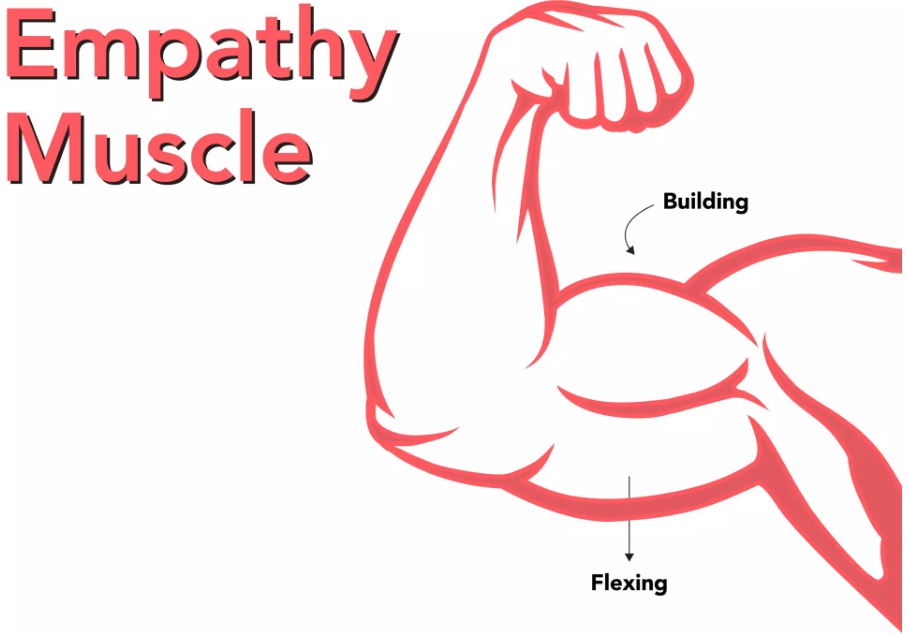
How often have you thought of empathy as a skill which can be trained?
During the Design Thinking class, we found out that empathy is an important characteristic for a service designer to have, but it is also a quality and a tool which can be improved.
Empathy is a prolific discussion point in Design practice and academia, not without a reason. We, the service designers in training, had an opportunity to experience the importance, as well as the complexity of empathy firsthand when, in the classroom exercise, we sought to understand the needs of our pretend users and create desirable solutions for them.
In its most basic definition, Empathy in Design is a deep understanding of the user and their experience, which is key to a successful design process. However, when designers come across users that are outside their reference group, the understanding of the user experience is limited by the designer’s empathic horizon. Limited understanding creates limited solutions. Therefore, it seems that broadening the empathic horizon and training the empathetic capabilities should be one of the primary concerns for any designer.
EMPATHY: A CAPABILITY OR A PROCESS OR A TECHNIQUE?

Empathy as a Capability: Empathy is a capability that can be developed and honed over time. Through training, practice, and self-awareness, individuals can enhance their empathetic skills. In the context of service design, this involves actively working on understanding the emotions, needs, and experiences of users.
Empathy as a Process: Empathy is also a cognitive and emotional process that involves actively engaging with users and their experiences. It’s a critical step in the service design process where designers strive to see the world from the user’s perspective, understand their challenges, and feel their emotions.
Is Empathy a Technique? : While empathy is fundamental to the service design process and often informs the use of various techniques, it is not in itself a technique. Instead, it’s an overarching mindset and approach that guides the use of techniques and methods in service design.
HOW TO TRAIN EMPATHY MUSCLES

Luckily the empathic horizon can be changed over time and be extended by training and experience if the designer has willingness to develop. (Kouprie and Seeswijk Visser, 2009, 439). Based on our research and discussions, we created an inexhaustive list of suggestions on how the empathy muscle can be trained – an empathy gym program, if you will.
- ACTIVE LISTENING: Active listening is a foundational skill for empathy. Pay close attention to what others are saying without interrupting or judging. Reflect what you hear to show that you understand and are engaged in the conversation.
- FEEDBACK AND SELF-ASSESMENT: Provide and ask for regular feedback on empathetic behavior and encourage individuals to self-assess their empathetic responses in various situations. This can help you and them identify areas for improvement and spot biases.
- EMPATHY-BUILDING EXERCISES: There are specific exercises designed to build empathy. For example, the “Four-Step Empathy Training” involves recognizing, understanding, expressing, and responding to others’ emotions.
- MINDFULLNESS: practices can help you become more aware of your own emotions and, in turn, become better at recognizing and understanding the emotions of others.
- Compassion – willingness (not only ability) to help the user.

In the context of service innovation and design, training empathy is not just valuable; it’s essential for creating services that truly resonate with users and address their needs effectively. It’s important to note that developing empathy is an ongoing process, and different techniques may work better for different individuals. Consistent practice and self-inquiry are key to building and strengthening empathic skills (muscle) over time.
Written by: Muhammad Mohsin, Marija Silinskiene, Niina Lambacka-Nygård
References:
Empathy Maps: Step-By-Step Guide 2nd Edition by Robert Curedale.
Marzavan, D. 2023. Design Thinking [lecture material]. Held on 8 and 9 September 2023. Laurea University of Applied Sciences.
Kouprie and Seeswijk Visser, 2009, 439
Brown, T. 2009. Change by design: how design thinking can transform organizations and inspire innovation. New York: HarperCollins Publishers.
https://dl.acm.org/doi/fullHtml/10.1145/2647087#body-6
https://nrl.northumbria.ac.uk/id/eprint/27429/1/UD16_Bridging_Mindfulness_final.pdf
https://designerup.co/blog/mindful-design-and-interaction/


Leave a comment